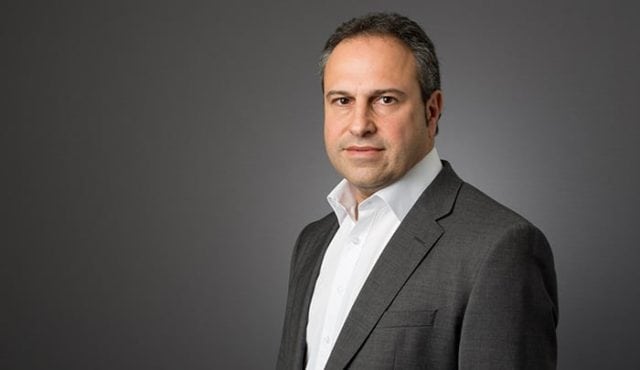Challenge for Challenger Banks
By Jonathan Newman
Some of you may remember household names like Radio Rentals, Blockbusters, Austin Reed and Midland Bank. In the 70s and 80s, they were at the top of their game with huge market share, seemingly impregnable and set for the future. It was unthinkable then that in a relatively short time, they would no longer be around.
Their position was usurped by fresher determined competitors, able to innovate and deliver. Just as importantly, these challenger businesses learnt good lessons from the leading players, taking the best bits and improving on the qualities that brought these once leading brands, their huge success.
That’s just what short-term lenders did when they arrived and came up against high street banks and institutional lenders over the last 5-10 years. Here lies the most significant and immediate challenge for the short-term lending market, as the major most successful players continue their upwards growth curve, expanding their businesses.
The short-term lending sector has outperformed almost every other sector of the lending market over the last five years. The space is filled with very clever people I hugely respect and admire, who saw an opportunity and grasped it. These short-term lenders knew and understood what the market, customer base and distribution wanted and they met that need in a commercial and direct way.
Lenders underwrote based on their own knowledge and property know how, backing their expertise, over traditional institutional, inflexible criteria- driven process of the banks which, at the coal face, were operated by underpaid, demotivated staff. Short term lenders took commercial views on commercially viable lending.
They also ran tight easy to steer ships, quick to react to market conditions and needs and easily outperformed the traditional money supply on delivery, execution and delivery, at rates that provided real and sustainable returns. Finding their property niche and areas of expertise, lenders concentrated their efforts in those areas, layering it with real transactional experience.
Key members were empowered to make decisions quickly and back their judgment. Lenders put together close teams of professional partners, with the correct and appropriate level of transactional experience and expertise. They worked with professional partners who importantly, understood, and shared the ethos for delivery, execution and certainty. Communication lines were open and easy.
Here are just some of the reasons behind success. Truly, it was not about taking risks or lending where others would not. Short term lenders succeeded. Traditional banks and lending institutions’ outdated thinking and processes failed to keep up, weighted by regulation, compliance, bureaucracy and a lack of vision and foresight.
If you agree with that analysis, in whole or in part, you will not be surprised at how the market flourished and how the short-term lending sector succeeded. For success was built on profit, not growth. It was about recognising a spade and then calling it a spade. It was about pricing correctly and sensibly and being unafraid to charge a premium for a premium service.
Notwithstanding the premium price, the market grew and short-term lending became mainstream and acceptable. More and more sophisticated borrowers looked to access funds at rates they were not used to, because they were prepared to pay a premium for that premium service. Commercial businesses opted to go the bridging route, because bridging lenders were displaying the same kind of commerciality in their lending that they, as commercial organisations themselves, understood and displayed in their own businesses.
Simply put, bridging companies attacked the banks and beat them, not on price, not always on risk, but on service, execution and delivery. The challenge now for the main players is to retain those same qualities that set them on their road and to build on these, innovating from there.
Recent market conditions have not reduced the appetite to lend, Indeed, there seems to be new entrants weekly, recognising the short-term market’s capacity to offer healthy returns. commercial business lending is the last vestige of unregulated lending.
Against those new entrants, established players, now better understand from personal experience how the larger the business, the more difficult corporate governance, the more difficult effective recruitment. Add to that, compliance and regulation and the ever-increasing need to internally monitor risk and people (so many lessons have been learned from trading record) and the challenge facing the larger sector players becomes ever clearer.
I am no business guru, just a lawyer with over 20 years’ experience in the transactional space of short-term lending. I have seen businesses flourish and fail. I have seen market conditions change and product development at an ever-increasing pace. My sense is that the market is nearing a pivotal time.
I believe there are some fundamental principles that are worthy of consideration:
- Delivery and execution remain the most important USP for distributor/ customer
- Specialist teams, whether underwriting or credit collection, must be filled with knowledgeable and empowered decision makers
- Surround yourself with the right professional partner relationships, those who understand not just their business, but your business and business needs as well.
- technical competence from your lawyers is a “gimme”- practical guidance only comes with ability and experience
- Retain and cascade the culture on which success was founded
- Ensure business heads are active within the business
- In your recruitment, fill round holes with round pegs, people with requisite not generic experience
So here lies the challenge for the larger lenders. Austin Reed, Blockbusters, Midland Bank failed to read the warning signs and react. our larger sector players, having built their brand, must not.
Jonathan Newman, Senior Partner, Brightstone Law











You must be logged in to post a comment.